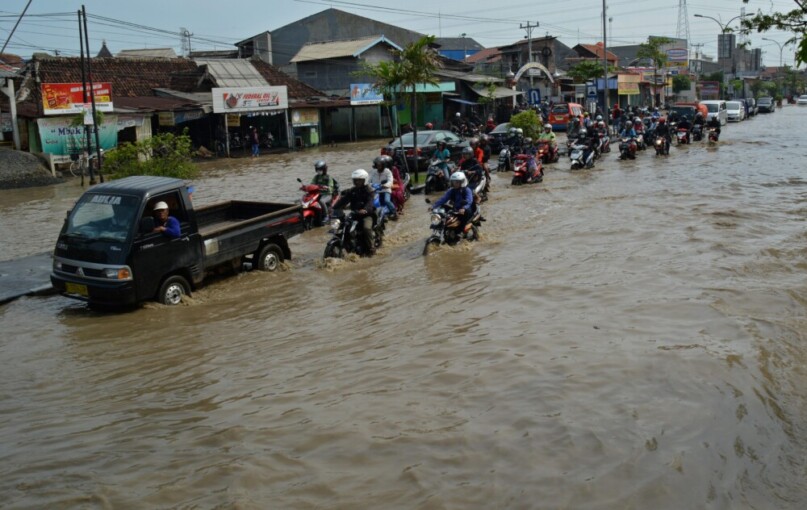
The local government of Semarang is seen as having made their best effort to prevent flood and flash flood in the capital of Central Java Province. But the flooding due to high tides or land submersion have expanded instead.
Various types of structural and non-structural models to control floods in the coastlines have been constructed such as dam, drainage, pumping station, coast reclamation, and others.
“Unfortunately, all of these have not yet been able to resolve the flooding, which is instead expanding,” said Ir. Suhardjono, M.Eng, at UGM Graduate School on Monday (29/1). .
The Head of Prevention and Preparedness of Disaster Mitigation Agency of Semarang touched upon this issue in his doctoral promotion in Geography Science at Faculty of Geography UGM. With promoter Drs. Projo Danoedoro, M.Sc., Ph.D and co-promoter, Dr. M. Pramono Hadi, M.Sc., he defended his dissertation titled Integration of Hydrology and Hydraulics Model Based on SIG for Evaluation of Polder System Performance in Minimising Floods and Tidal Floods.
Suhardjono said the Semarang municipal government had tested to close Semarang River. It was expected with the construction of retention pools, drainage pumps to complement the polder system, the polder system of Semarang River would serve to the drainage of Semarang River area.
“The Asin River and Baru River that span 12,8 km² are installed with retention pools measuring 6.8 ha with water capacity of 130,000 m³,” he said.
With the goal to make simulation model of polder system in the Semarang River watershed dynamically based on flood hydrography and to evaluate the polder system in a 5 year period in order to mitigate the flood and flash flood in Semarang River watershed, Suhardjono’s research showed the creation of simulation model of polder system of Semarang River. Meanwhile, elevation decrease factor of river surface/channel -2 in polder system of Semarang River is able to increase the capacity of the polder system up to ±150.000m³ or delays of flooding up to 9.87 hours.
“(We tried) To reduce the span of flood area down to approximately 3.390 km sq. Meanwhile, decrease of river surface/channel -2km would have an impact that the river flow in the upstream will run dry,” he said.
Suhardjono hoped this research would be able to inform the Semarang local government to make simulation of spatial based hydrology and hydraulics model for the polder system to control the flood and flash flood in the city’s coastal areas, as well as to inform them on the evaluation of polder system application in similar conditions elsewhere.


